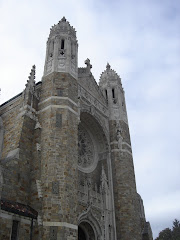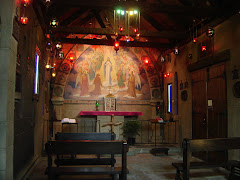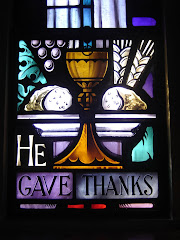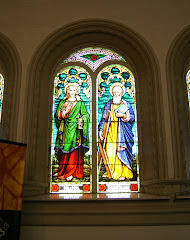 Few subjects in the history of Christendom have attracted such mountains of pure unadulterated horsehockey as the Holy Grail. These days, people can't even be satisfied with it being Our Lord's cup. Has to be something else. You could fill a good-sized room with all the nonsense written about it. Some is just garbage. Some is devilishly dangerous.
Few subjects in the history of Christendom have attracted such mountains of pure unadulterated horsehockey as the Holy Grail. These days, people can't even be satisfied with it being Our Lord's cup. Has to be something else. You could fill a good-sized room with all the nonsense written about it. Some is just garbage. Some is devilishly dangerous.Ruling out later attempts to make the Grail something it never was, there are several cups out there that are actually presented as Our Lord's. Most are obviously trumped up. One is not. It's the only one that, in my opinion ( notice I never say "IMHO"? ), just MAY be the genuine article. First, there's one misconception I have to address. There's a perception today that the Grail was probably made of wood. This is almost impossible. The idea was invented by devotees ( certainly NOT Catholics ) of the "Nanteos cup". This olive-wood bowl turned up at a house in Wales. It appears to have been brought back from the Crusades. The Nanteos cup has, since it was found, been surrounded by a highly new-age form of mysticism that is very dangerous. the notion that the Grail could have been wood is contradicted by the fact that wooden cups would have been contrary to the Passover rules of the time. People in Judea just didn't use wooden cups, they used cups made of stone or pottery.
 The only contender for being the real cup of Our Lord, that has any evidence behind it, is the Santo Caliz, at the Cathedral of Valencia. It's history is documented back the the early 12th century. A manuscript from 1134 calls it "the chalice in which Christ, Our Lord consecrated His Blood", which "was sent by St. Lawrence to his father's town Huesca". While it would be impossible to offer proof, the possibility is very real.
The only contender for being the real cup of Our Lord, that has any evidence behind it, is the Santo Caliz, at the Cathedral of Valencia. It's history is documented back the the early 12th century. A manuscript from 1134 calls it "the chalice in which Christ, Our Lord consecrated His Blood", which "was sent by St. Lawrence to his father's town Huesca". While it would be impossible to offer proof, the possibility is very real.The Santo Caliz is a stone cup which appears to have been made in the Middle East sometime between the 4th and 1st centuries BC. It was later set in a frame with another stone cup used as a base. In keeping with the tradition that the early popes used it as a chalice, both John Paul II and Benedict XVI have celebrated Mass using the Santo Caliz. That gives a whole new meaning to the words "this precious chalice".
You can find more information on this remarkable relic HERE and HERE.
.png)









.png)









2 comments:
There's a great book that traces the history of the grail to St. Laurence, the Deacon of Rome.
The original Latin of the Roman Canon also seems to indicate that the chalice used by the early Popes was in fact the Holy Grail and this precious chalice meant precisely that.
Here's the CNS article of the Pope using the Grail at the Mass in Valencia.
The only problem is that we'll never really know for sure.
That is where our faith comes in to play.
Post a Comment